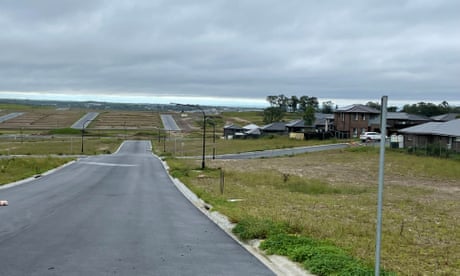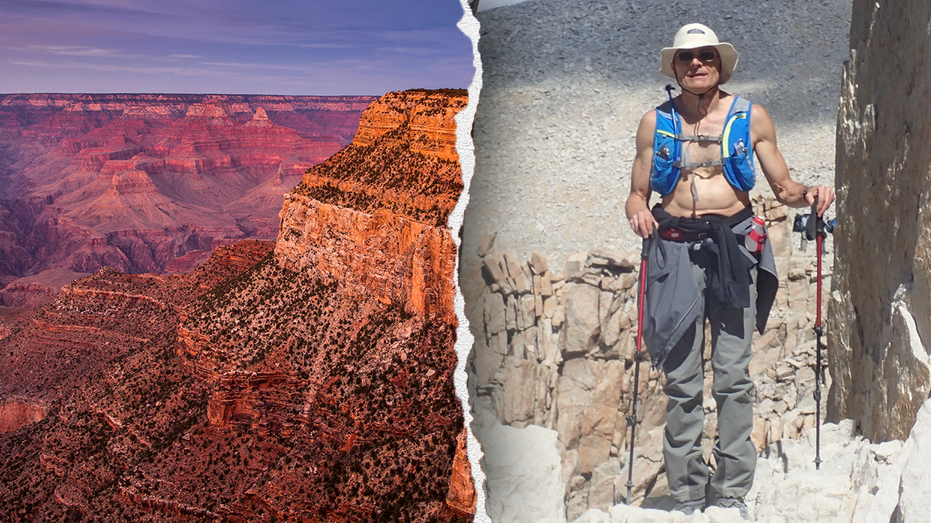- by foxnews
- 23 May 2025
Thousands more to live on floodplain on Sydney’s fringes if developments allowed to proceed
Thousands more to live on floodplain on Sydney’s fringes if developments allowed to proceed
- by theguardian
- 11 Mar 2022
- in news

Thousands more people could soon be living on an extensive flood plain on the fringes of Sydney if land already approved for development were to proceed, according to planning officials, councillors and the New South Wales government's own data.
Blacktown city council alone has more than 10,000 homes already planned, with that region's population expected to swell by half to more than 600,000 over the next two decades .
Thousands of hectares lie in the Hawkesbury-Nepean flood plain, and while the NSW government is pausing new developments while it revises its flood strategy, pressure to open up more land for housing isn't expected to recede.
That is despite two east coast lows in a week swelling the river to its highest levels in some places since 1978. Hundreds of homes are likely to have been inundated, renewing worries many more people will be placed in harm's way if developments proceed based on historic flood data that doesn't account for climate change.
Rob Stokes, NSW's infrastructure and a former planning minister, said the latest flooding reinforced the need to take a precautionary approach towards flood plain developments, including tackling the legacy of past decisions.
"We had some real concerns," said Stokes, who intervened in late 2020 to halt development in part of the flood plains and gave regional councils more discretion to limit new projects in 2021. "After an event like this past week, we have to be open to having another look at what's been approved for development."
According to the 2021 environmental impact study on the plan to raise the height of the upstream Warragamba Dam, a flood with a 1% chance of occurring in any one year - usually dubbed a "one-in-100-flood" - would affect 7,600 homes.
A probable maximum flood, or worst-case scenario, would affect 36,700 homes, the study said, citing 2018 data.
Changes introduced by the previous Labor government in 2006 with its Resilient Valley Resilient Communities Flood Risk plan had opened the way for developments to proceed within the current one-in-100 year flood zone, said officials who spoke to Guardian Australia but requested anonymity because they were not authorised to comment publicly.
The key areas to be developed are Penrith Lakes, Riverstone North, Marsden Park and West Schofields. One obstacle has been the lack of insurance given the spate of recent floods as well as the historical record.
However, the multibillion-dollar plan to lift the Warragamba Dam by as much as 14 metres, would serve as a green light for such developments.
"If the dam wall's raised, I'd put down very good money that these projects will rapidly progress," one official said.
"There's been a lot of paperwork done, followed by waiting."
One local government agreed thousands of homes that may be exposed to flood risks could be built: "The planning legacy dates back to Labor but this present government is pressing on with it."
Greens MP David Shoebridge said the government's own data indicates developers have their sights on building within the flood zone.
"There are over 40,000 hectares of flood-prone land just in the Hawkesbury-Nepean basin, much of it already slated for more housing, and if we let that happen we are turbocharging future disasters," Shoebridge said. "Just like the flood waters, money will find its way."
Hawkesbury city council's area alone has 23,900 hectares of the flood-prone land, with 11,500ha in Penrith, 4,700ha in Blacktown and 4,500ha in the Hills shire.
"The very first thing that the NSW government needs to do to protect homeowners from floods is stop allowing new homes to be developed on known flood plains," Shoebridge said.
"The planning minister could issue a state planning policy tomorrow and put a moratorium on new flood plain residential development, but developers hold so much power over state governments that they won't even discuss it."
A Blacktown city council spokesperson said the NSW government mandates the location and extent of planned development, which the council was required to follow.
"New dwellings must be at the 1:100 year flood level, plus an additional 500mm of elevation," the spokesperson said, citing the Flood Plain Development Manual.
For Blacktown's Marsden Park North, there were 6,224 dwellings proposed, while in West Schofields there are were another 4,494.
"The progress and completion of the rezoning of these precincts has been delayed by the Department of Planning and Environment, pending the outcome of the NSW government's flood evacuation strategy," the spokesperson said.
A Department of Planning and Environment spokesperson said rezonings led by the NSW government had been paused after the March 2021 floods in Sydney's northwest while a new flood strategy was being prepared. "This pause is still in place today," the spokesperson said.
Stuart Ayres, the minister for western Sydney, said raising the dam wall would reduce the flood risk for the 140,000 people who currently work or live in the Hawkesbury-Nepean, without saying how many more are planned for the area.
"The NSW government continues to carefully considering all development in the Hawkesbury-Nepean Valley in light of the flood risk, which is why integrated land use, road and emergency planning is a key action under the flood strategy." Ayres said. "The upgrade of evacuation routes is another key action being delivered under the flood strategy."
"Raising Warragamba Dam has never been about development, it's always been about protecting people and property who live in higher risk flood areas," he said.
Mary Lyons-Buckett, a Hawkesbury councillor and former mayor, said important information had been withheld from the public, including on regional land-use planning, impacts of cumulative overland flooding and the potential for longer periods of downstream inundation caused by post-floods dam releases.
"I do not believe we can sustain any more development in the flood plain," Lyons-Buckett said. "We need to seriously consider the future of those already living there - we need flood proof evacuation routes, as we know the only true way of ensuring safety is to get people out of harm's way."
The Hawkesbury mayor, Patrick Conolly, said his council had halted new developments within the flood plain.
His concern, though, was the plan for neighbouring councils such as Penrith and the Hills to increase their populations by many thousands, potentially jamming up evacuation routes. Conolly supported the dam wall raising, however, arguing it was needed to protect existing homes.
"We've got 12,000 houses under the one-in-100 year flood level because they've been here for decades," he said. "And we have to protect them.
"So in the end, the answer can't just be stop developing, or buy them all back, because neither of those things is practical.
"It doesn't solve the problem we've already got."
- by foxnews
- descember 09, 2016
United Airlines flight returns to Hawaii after concerning message found on bathroom mirror; FBI investigating
United Airlines Flight 1169 to Los Angeles returned to Hawaii after a "potential security concern" aboard the plane. The FBI and police are investigating.
read more


